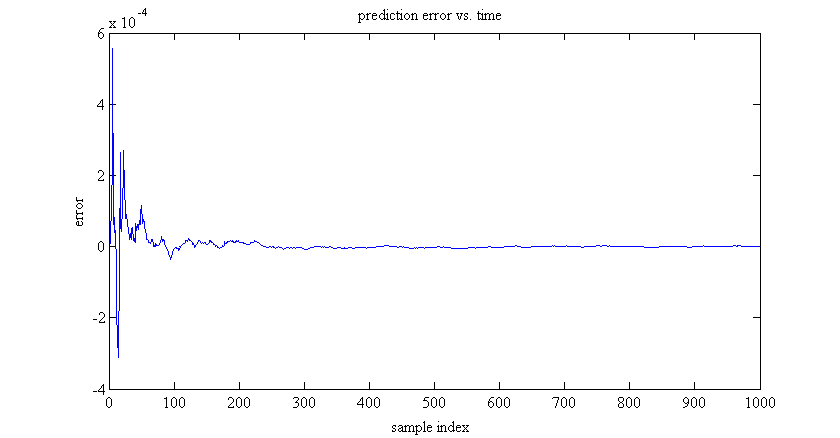I need to identify the coefficients of a linear, causal, time-invariant physical system that can be described by a classical state-space formulation.
For the sake of the example, suppose that the system has two states, only one of which is observed, and one input. Suppose that this state-space is described by the following matrices:
a =
x1 x2
x1 -1.25e-05 1.25e-05
x2 1.389e-05 -2.083e-05
b =
u1
x1 0
x2 6.944e-06
c =
x1 x2
y1 1 0
d =
u1
y1 0
The discrete, equivalent, zeroth-order-hold transfer function is given by:
3.481e-05 z + 3.446e-05
-----------------------
z^2 - 1.97 z + 0.9704
In filter terminology, this is clearly an IIR filter because of the higher-order coefficients in the denominator.
I'm looking for a suitable adaptive filter algorithm that will:
- be numerically stable
- allow for online updates, i.e. be recursive
From my research so far, I've read that if you treat the recorded signal values as inputs to this filter, then it's possible to treat this filter as a FIR filter. This is called the equation error approach. One can then apply, for example, the QR-RLS adaptive FIR filter to find the coefficients.
But in my trials on the real system I often find filter coefficients that are not physically possible, and I just don't know if my hand-crafted adaptive filter is correct or not. I would like to try with an "official" implementation of such an adaptive filter.
Therefore, my question is whether there exists (for MATLAB or in C) a freely available implementation of an adaptive IIR filter that has the same advantages of a QR-RLS FIR adaptive filter.


